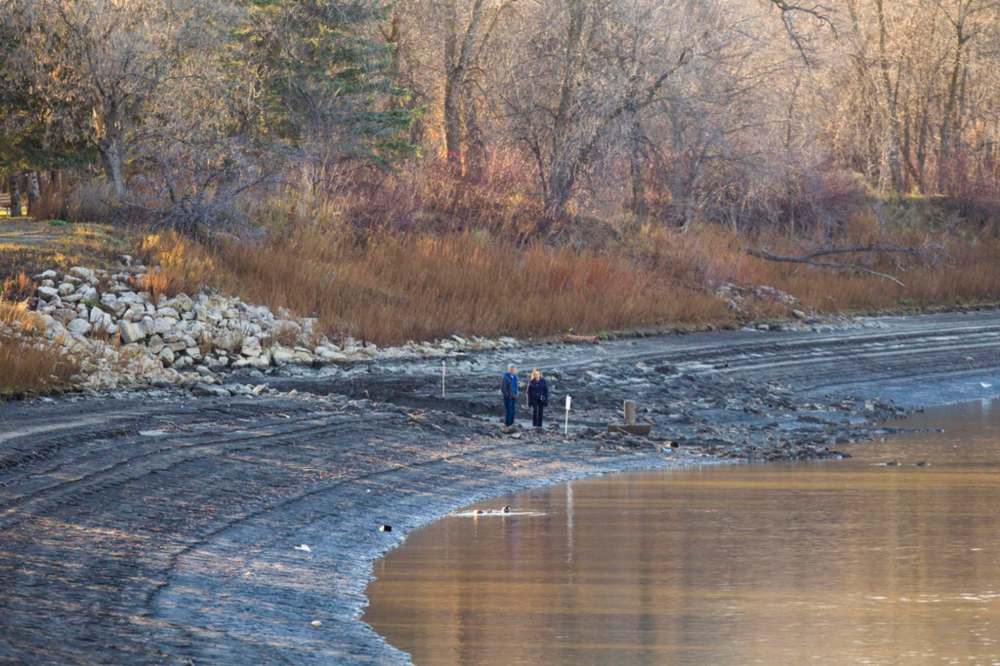Another dry year raises concern for future
Advertisement
Read this article for free:
or
Already have an account? Log in here »
To continue reading, please subscribe:
Monthly Digital Subscription
$19 $0 for the first 4 weeks*
- Enjoy unlimited reading on winnipegfreepress.com
- Read the E-Edition, our digital replica newspaper
- Access News Break, our award-winning app
- Play interactive puzzles
*No charge for 4 weeks then billed as $19 every four weeks (new subscribers and qualified returning subscribers only). Cancel anytime.
Read unlimited articles for free today:
or
Already have an account? Log in here »
Hey there, time traveller!
This article was published 07/11/2021 (1047 days ago), so information in it may no longer be current.
It’s been a long, dry year in Manitoba. Those used to frosty mornings and first licks of snow by this point in November, have instead been met with clear, sunny skies and unusually balmy days.
Despite the thrills of a warm mid-fall, agriculture and climate experts warn the dry year is part of a pattern that could have serious consequences in the future.
“We had a significant rainfall in mid-harvest which helped quite a bit, and another one about a month ago, which helped put some confidence in people to do some fall fertilization and some fall tillage to stimulate some pasture growth,” said Keystone Agricultural Producers president Bill Campbell.

“But that did not really get into the sub soil at all, so there’s huge concerns moving forward about what the sub-soil moisture levels will be in 2022.”
Campbell said farmers across the province are “hoping and praying” for heavy snows and spring rain to help revitalize the land.
Only 332 millimetres of precipitation have fallen in Winnipeg so far this year. In 2020, the city logged 283 mm, said Sara Hoffman, a meteorologist with Environment and Climate Change Canada.
The annual average, dating to 1875, is around 510 mm.
“This year, we’re a lot closer than we were last year for sure, and we still have two more months to go, but we are well-below that average for sure,” she said.
The Drought Monitor of Canada — a federal map tracking severities of drought across the country — indicates the majority of Manitoba is in either a severe, extreme, or exceptional drought, with areas of exceptional drought (the highest level) centred around Winnipeg.
“That is the worst that they can classify something — and it’s a huge area that encompasses Winnipeg and a lot of southern Manitoba, and it’s been that way for quite some time,” said Hoffman.
Though droughts and floods are part of the normal ebb and flow of prairie life, climate change expert Curt Hull believes the dry conditions that have scored the past couple years are “absolutely” cause for concern.
“The indications are that climate change is amping everything up. It’s making floods more severe, and it’s making droughts more severe,” said Hull.
Hull noted the extreme weather patterns lead to a phenomenon called the “loss of stationarity,” meaning effectively industry experts from agriculture to engineering are less able to rely on past data to plan for the future.
Manitoba’s rivers and lakes have been particularly low this year. Over the weekend, water levels stooped so low the Red River coughed up a long-forgotten car just south of the Provencher Bridge.
In other areas around the city, low water levels in the Assiniboine, Red and La Salle rivers have exposed dangerously thick mud or left paths open to walk through bone-dry floodways. Lake Winnipeg, too, is at it’s lowest point in history.
Campbell said the low rivers and low water retention areas will be a concern for rural Manitobans who depend on reservoirs and groundwater for residential and agricultural use.
“Water is somewhat taken for granted that you turn on the tap and expect it to be there; if it’s not the impacts are huge, especially if you have livestock that require water throughout the winter,” he said.
Without stable water sources, Campbell said some rural Manitoban farmers may have to drill wells, haul water or offload livestock, all of which comes with “huge” consequences.
“When you look at the impact that the drought has had — and it is so widespread — my information leads me to believe that we are about 20 million tons short of production in Western Canada,” said Campbell.
As prices of goods for farming increase and soil moisture levels decrease, Campbell said Manitoba’s grain exports will likely take a hit this year, having effects on the transport industry, farmers’ contributions to the economy, and the province’s overall gross domestic product.
“There will be a trickle-down effect to some degree on what agriculture contributes to Manitoba’s economy this year,” he said. “It’s concerning moving forward.”
julia-simone.rutgers@freepress.mb.ca
Twitter: @jsrutgers

Julia-Simone Rutgers
Reporter
Julia-Simone Rutgers is a climate reporter with a focus on environmental issues in Manitoba. Her position is part of a three-year partnership between the Winnipeg Free Press and The Narwhal, funded by the Winnipeg Foundation.
Our newsroom depends on a growing audience of readers to power our journalism. If you are not a paid reader, please consider becoming a subscriber.
Our newsroom depends on its audience of readers to power our journalism. Thank you for your support.



